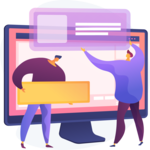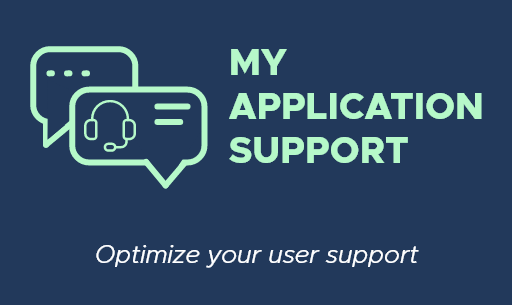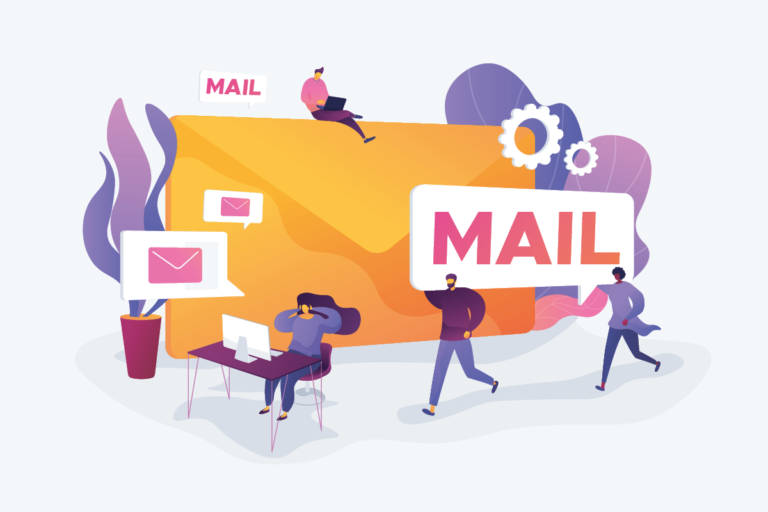How to improve user satisfaction and their performance on your business software
According to a post-pandemic Nexthink study, there are 100 IT interruptions per year of 28 minutes on average. Not only does this affect your employee experience, but also their productivity with 40 hours lost per employee per year! Especially since according to this same study, only 45% of IT problems are reported. If 45% of users tolerate IT disruptions, this tolerance can have long-term consequences on their satisfaction.
Employees often encounter problems with their business software. They can be IT – a bug, a problem following a development – or business – a lack of information on a field to fill in, blocking maintenance for data feedback, an update on which they have not been trained…
In the event of a problem, users then send a request for assistance / open a ticket to the support in the hope of being unblocked as quickly as possible. But once the request has been submitted, users are most of the time powerless regarding the resolution, its deadline and the quality of the provided response.
To maintain its brand image and talents, your organization must improve its application experience and satisfaction. Whether on applications used daily or occasionally. Your entire tool fleet is important.
For an everyday software, this involves facilitating the completion of processes and maintaining a high level of skills. On an occasional software, to simplify and make one-off actions accessible.
In this article, we will see what can affect the satisfaction of your users with business software, and what to do to overcome this problem.
Poor ergonomic applications
Although the applications are designed to improve user experience, they are not as ergonomic as expected. Indeed, digital tools should make it possible to simplify processes.
However, the software suites developed by publishers are now standardized and adapted to the greatest number. They are spreading more and more, and are thus becoming difficult to maintain and adapt to the specific internal uses of each company.
According to InsideBoard’s 2021 Digital Procurement Success Barometer, 50% of Purchasing Departments say they are constrained by the standards imposed by the tools.
From the beginning, it is important to make users a real stakeholder in your projects. The key to a good application experience lies in its adequacy between the needs/opinions of users, and its good adoption once adopted: well-executed processes, continuous training, etc.
Make sure to involve your users at each stage of your application project, to collect their needs, know the use cases, potential obstacles, and define an adoption and training strategy appropriate to the profiles of your users.

A lack of access to information
Despite the tedious implementation of projects and the tests made on your business application, incidents may occur post-deployment: a screen stuck during maintenance, a practice forgotten after initial training, a lack of communication on an evolution of the application or training available for newcomers, …
Change management and the collection of user feedback should not stop at roll-out. Access to information and training must be facilitated, and help content must be available on demand and continuously updated.
These helps facilitate self-help, which is often very appreciated by users.
Thus, any user will have available answers to their questions and be autonomous in their tasks without being blocked, thus without going through your IT support.
As the needs of modern learners are constantly evolving, they must today be increasingly integrated into the flow of work of employees and adapted to their profile.
Training methods have therefore diversified themselves: e-learning, step-by-step integrated into the application’s screens, LMS platforms, etc.
In addition, when a problem appears, it is very likely that it has already happened to another user. By analyzing the requests received by the support, it is easier to be reactive and identify the processes or even screens of the tool requiring help and create it in order to provide answers to recurring questions, and ultimately reduce the number of tickets.

A tedious support contact process
It is not excluded that despite all these tips put in place, your users will still end up contacting your IT support.
First of all, because nowadays the questions no longer only relate to office equipment, but also to business processes.
Users therefore have more reasons to contact business support in order to be unblocked.
However, despite strong progress in the digital transition of companies, two problems persist:
- First, the user does not necessarily know what elements the support will need to answer their question. Support requests are then incomplete, increasing the number of qualification round trips to resolve the incident, and thus making users dissatisfied with the process.
- Second, many users may not remember the process to contact support and may be discouraged from reporting an issue, or will not know how to do so effectively.

Tips to improve your users' experience when contacting support
Several tips can help improve the image of the support while promoting user experience:
As we have seen, promoting self-help on tools allows the user to be independent, and above all up to date in their use.
Furthermore, management and analysis of assistance requests make it possible to identify recurrences.
Indeed, user requests are gold mines of data. They are the most revealing of the problems encountered and the way in which they are perceived. It is then interesting to create a database by grouping similar elements and analyzing behaviors. You then get relevant performance metrics and generate useful reports based on the things you’re trying to understand. From this database, develop a coherent strategy: create user support content, plan a global training session, communication by email, etc.
If problems persist, integrating request entry into the tool/screen they are in prevents them from getting lost in the process of contacting support, and speeds up the resolution of their problem.
The next level would be to even help him write his request: by inserting an attachment to avoid a round trip to change bank account details in the supplier portal or the HRIS, a screenshot to show where the training catalog does not work, or by offering automatic messages depending on the category of the request.
Also, having a routing system by category allows requests to arrive directly to the right person capable of responding to them, rather than navigating between different levels of support.
Finally, being able to consult the requests sent, their progress/status, the history of requests, or even respond to support from the same interface, improves the ergonomics of the process and therefore increases user experience.
These different developments in user support guarantee faster resolution time and better response quality. This is why they make it possible to meet the satisfaction and experience challenges of your users.
With all these tips, you will be able to offer the best possible user experience on your business applications!
If you don’t want to miss out on our next tips on application support, subscribe to our newsletter!



